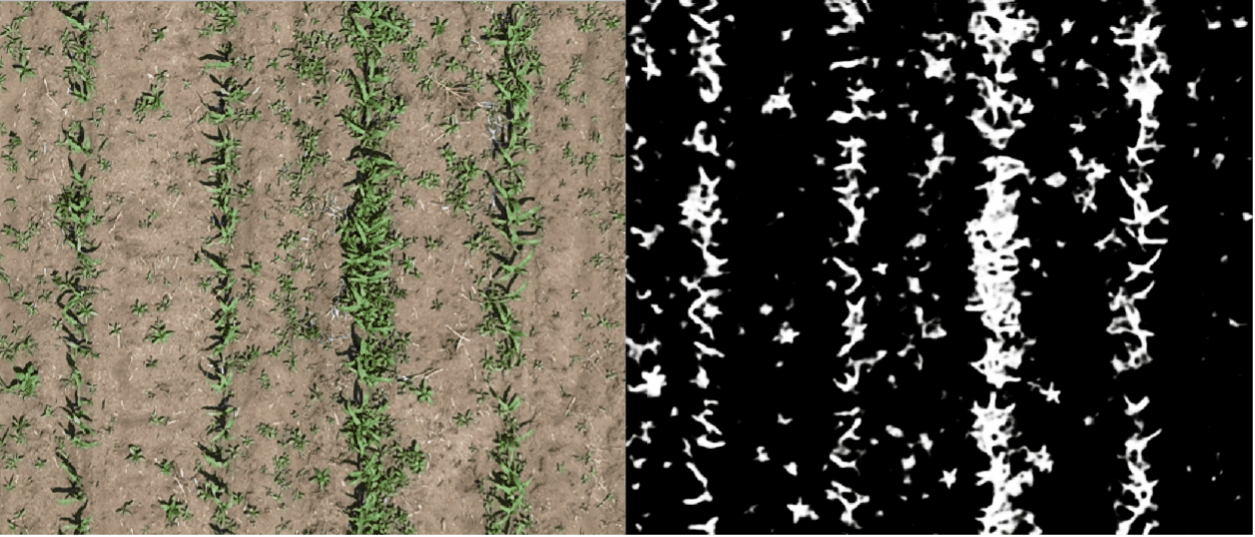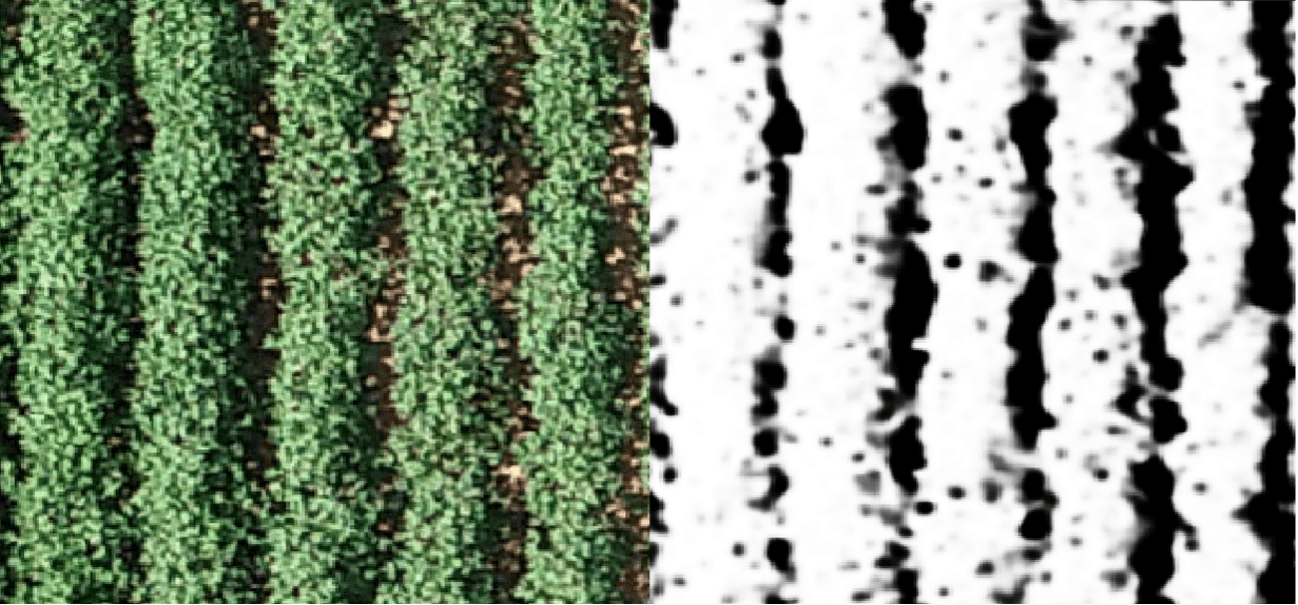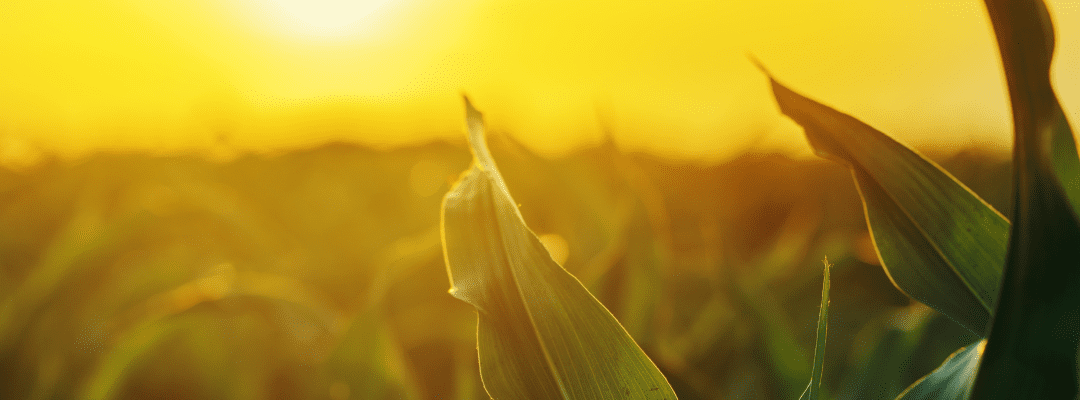Biomass production from growing crops is a foundational component to every agricultural system. Through primary production, a portion of this biomass is eventually harvested for use in food, fuel, or fiber, while the remainder is returned to the soil, providing vital agronomic and ecological services.
As crop stover and residue from the remaining biomass break down and undergo decomposition by soil microorganisms, organic carbon is introduced into the soil ecosystem. This gradually releases macro- and micro-nutrients essential for the growth of crops (e.g., nitrogen, sulfur, etc.). Over time, these services maintain soil water holding capacity, reduce erosion, and enhance nutrient availability – all essential for a holistic and sustainable crop production system that promotes soil health, nutrient cycling, and ecosystem resilience.
During the growing season, biomass is a strong indicator of how well the crop is progressing. Increasing biomass indicates the development and proliferation of plant roots, improving the growing crop’s ability to take up water and essential nutrients from the soil. Biomass is also correlated with leaf area index, which is crucial in the crop’s ability to intercept solar radiation required by plants for photosynthesis. Typically – though not always – relatively higher biomass corresponds to a healthier crop, increased vigor, and ultimately higher yields.
Motivation for Taking Biomass Measurements
In-season biomass measurements offer benefits across a range of applications, including:
- Nutrient and Water Management: Biomass measurements provide insights into spatial and temporal variations, serving as an indicator for crop stress due to factors like nutrient or water deficiencies. This information guides decision-making in fertilizer and irrigation management.
- Weed control monitoring: The uniformity of biomass distribution across a field, especially between crop rows before canopy closure, is helpful for weed management or plot deactivation due to excessive weed pressure (Figure 1).
- Crop health and vigor monitoring: Biomass serves as a reliable proxy for gauging crop health and uniformity, aiding in identifying and explaining unanticipated crop stressors.
- Crop phenotyping: Biomass, as a trait, assists scientists in evaluating the performance of different genetic varieties under diverse management practices and environmental conditions, as well as treatment effect comparisons.
- Yield forecasting: Biomass correlates with critical physiological crop processes, making it a pivotal factor in yield prediction models that can be leveraged to inform supply chain and marketing decisions.

Figure 1: RGB image (left) of a weedy corn field alongside a greyscale version of the same area (right). The relatively high biomass between crop rows before canopy closure is indicative of weed presence.
Measuring Biomass with Remote Sensing
Manually measuring crop biomass is seldom practical due to its time-consuming, labor-intensive, and notably destructive nature, rendering any further measurements and harvest impossible. In contrast, remote sensing presents a non-invasive and cost-effective means for estimating crop biomass at different spatial scales.
A few methods exist for biomass estimation through remote sensing, with the most suitable approach depending on accuracy requirements (i.e., relative versus absolute), spatial and temporal resolution requirements, and the sensors/data available. Here are some options:
- High-Resolution RGB Imagery: This method involves segmenting vegetation pixels from soil pixels to quantify canopy cover, which is often correlated with biomass. RGB imagery is well-suited for capturing relative differences in crop biomass (Figure 2).
- Multispectral Imagery: Multispectral imagery captures visual and near-infrared data, which, when handled through the use of derived vegetation indices, can be correlated with biomass, particularly during early growth stages before canopy closure. Multispectral imagery is also suitable for assessing relative differences in crop biomass (Figure 3).
- Supervised Regression Model: Training a machine learning model with ground truth data is the most accurate way to estimate biomass, ensuring high absolute accuracy. While this approach requires more effort, it is an excellent choice when your specific application demands a high level of absolute accuracy.
These methods offer flexibility in biomass estimation, allowing a tailored approach to different agricultural applications’ specific needs and resources.

Figure 2: RGB image (left) of a soybean field alongside a greyscale version of the same area (right). The brighter pixels represent vegetation pixels, whereas the darker pixels represent non-vegetation pixels. Subtle differences in canopy cover can be a useful proxy for relative biomass estimation.
Figure 3 illustrates the general relationship between NDVI (Normalized Difference Vegetation Index) from spectral data and crop biomass. The exponential relationship between NDVI and biomass indicates that spectral data are most sensitive to increases in biomass at relatively low biomass levels, corresponding to the earlier growth stages before canopy closure. As biomass increases, its relationship with NDVI eventually becomes “saturated out.” This means it becomes insensitive to any further increases in biomass.

Figure 3: The relationship between normalized difference vegetation index (NDVI) and biomass. Note: this figure is intended to show the general relationship of biomass as NDVI increases; the absolute values illustrated may not be accurate for every crop species.
The Value of Biomass Measurements
It is important to note that the relationship between biomass and remote sensing can be influenced by various factors, including crop species, genetics, soil types, and management practices.
Variables like leaf area index, leaf architecture and orientation, chlorophyll content, and leaf structure are crucial covariates that significantly contribute to our understanding of the complex relationship between biomass and remote sensing.
Despite these influences, measuring crop biomass is useful across a range of agricultural applications, and remote sensing continues to be a valuable tool in biomass estimation.


